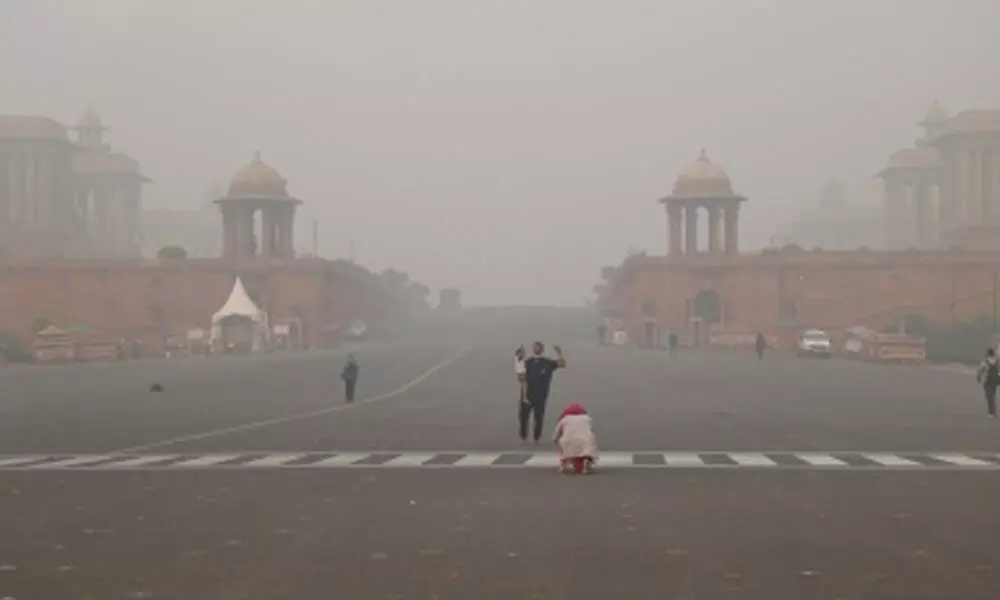Live
- Sell paddy to the govt, get MSP: Manohar to farmers
- Voice recording of excise scam reveals corruption: LoP
- Catalysing economic growth: HMRL turns 7
- Govt sets up EAGLE to check drug abuse
- Water Board’s OTS-2024 scheme ends in two days
- Congress worker alleges corruption in issuing bar licences
- BBMP set to present budget for 5th time in a row without netas
- Banyan Nation to invest Rs 200 cr in TG
- MP Vamshi meets UM Ram Mohan Naidu
- Occult rituals panic Nandyal locals
Just In

Delhi-NCR wakes up to fog, very poor AQI (Photo/IANS)
Delhi-NCR woke up to a foggy Monday morning with its minimum temperature settling at 10 degrees celsius and an overall Air Quality Index (AQI) of 370, which is likely to deteriorate further from December 1 due to change in wind speed.
New Delhi: Delhi-NCR woke up to a foggy Monday morning with its minimum temperature settling at 10 degrees celsius and an overall Air Quality Index (AQI) of 370, which is likely to deteriorate further from December 1 due to change in wind speed.
The India Meteorological Department (IMD) has pegged the maximum temperature at 27 degrees Celsius.
This entire week, the maximum and minimum temperatures have hovered around 27 and 10 degrees celsius, respectively with foggy mornings.
The relative humidity at 8.30 a.m. stood at 97 per cent. On Sunday, the relative humidity at 7.30 p.m. was recorded at 69 per cent.
An AQI between zero and 50 is considered 'good', 51 and 100 'satisfactory', 101 and 200 'moderate', 201 and 300 'poor', 301 and 400 'very poor', then 401 and between 500 is considered 'severe'.
On the air quality front, the level of PM 2.5 and PM 10 are in the 'very poor' category in the city's air with 211 and 353, respectively, according to the System of Air Quality and Weather Forecasting And Research (SAFAR).
As per SAFAR estimates, the local surface winds are likely to increase moderately on November 29 and 30 that increases dispersion of pollutants leading to slight improvement, but AQI remains in the 'very poor' category. From December 1 wind speed and temperature are likely to decrease, reducing ventilation leading to slight deterioration of air quality. Low mixing layer height is preventing efficient dispersion of pollutants. The share of stubble burning related pollutants in Delhi's PM2.5 is 3 per cent.

© 2024 Hyderabad Media House Limited/The Hans India. All rights reserved. Powered by hocalwire.com







